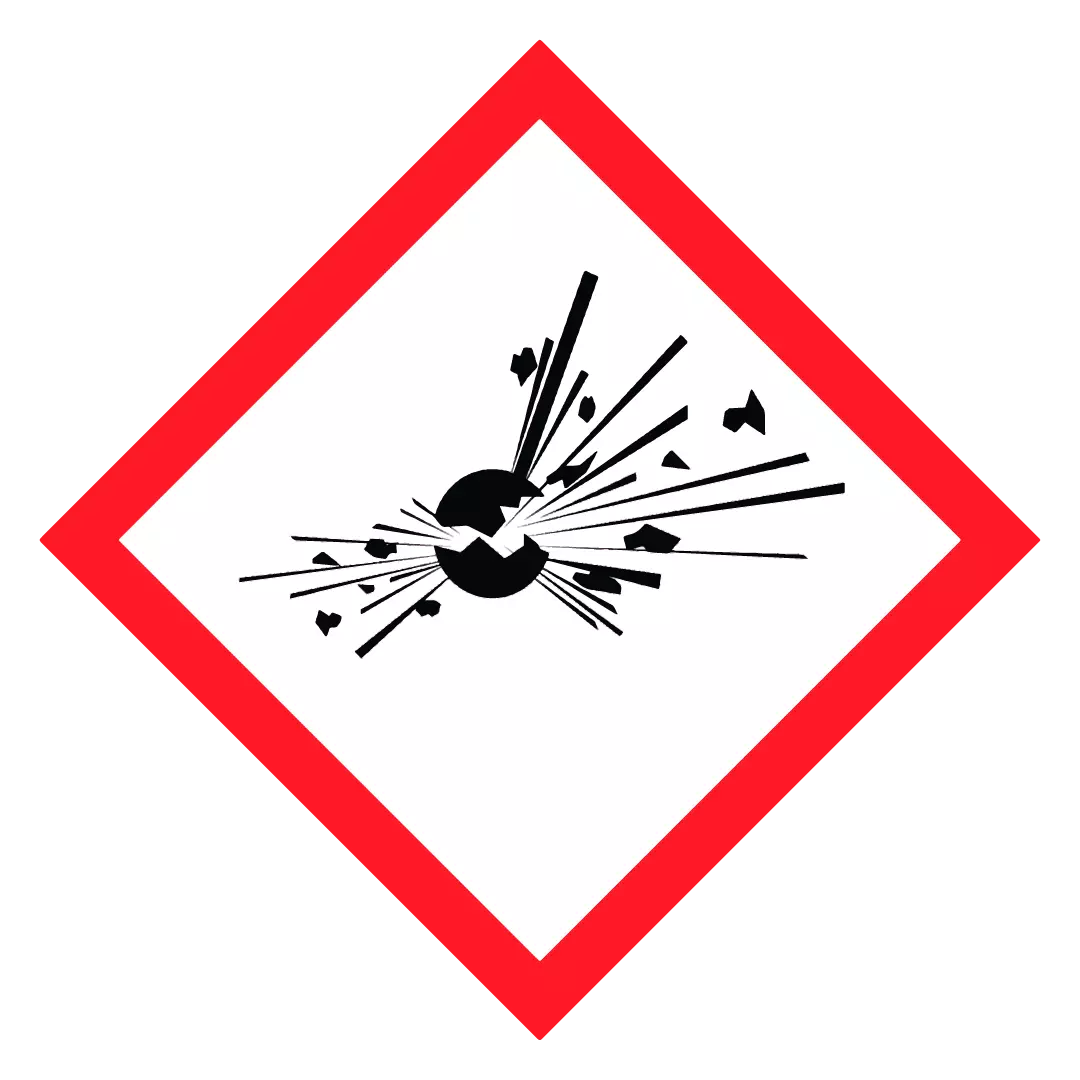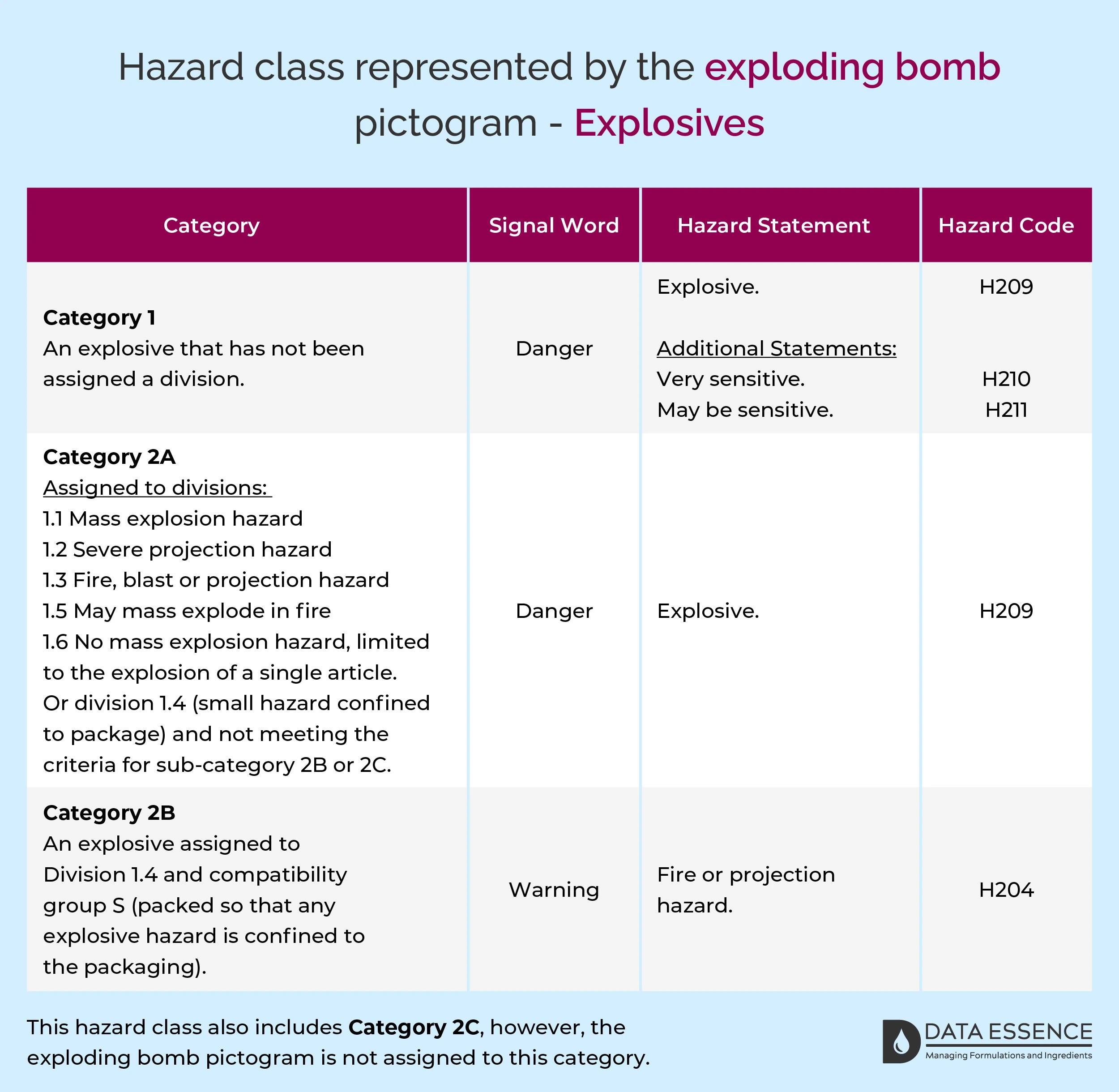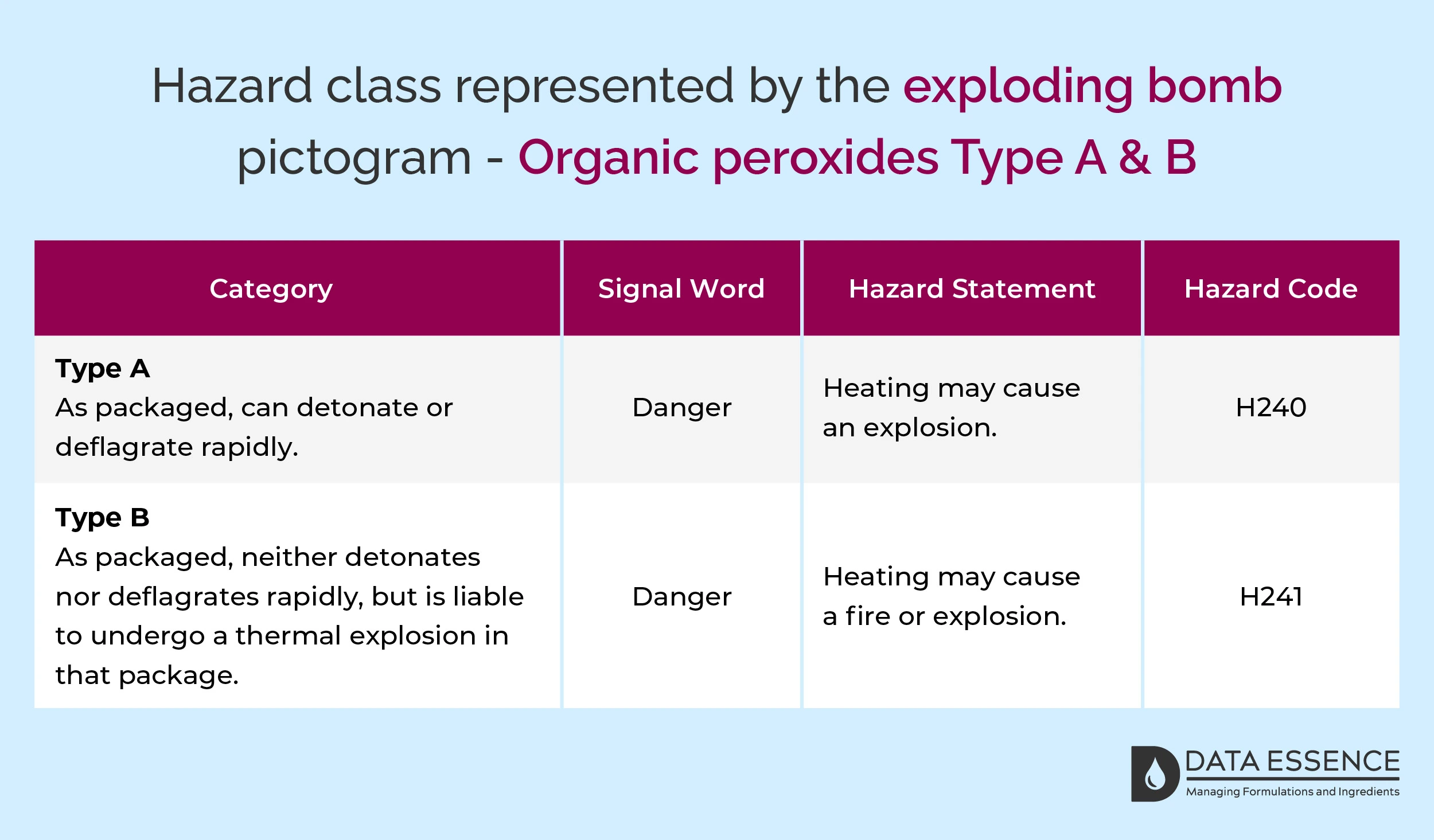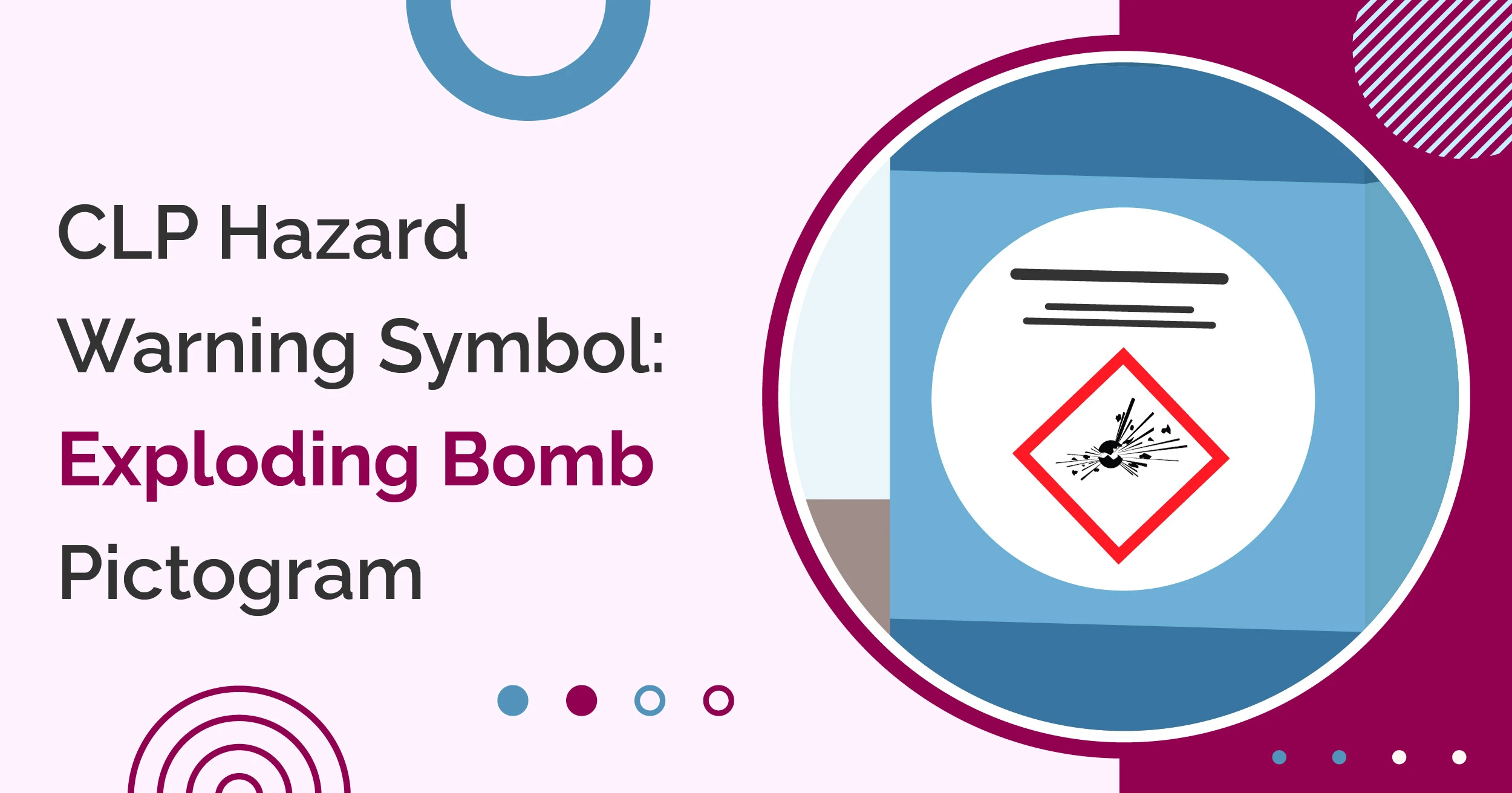Whether you already handle explosive products or are simply interested in learning more about the necessary safety precautions, this blog post will provide you with valuable insights to protect yourself and others from potential hazards.
What does the exploding bomb pictogram mean?

This CLP pictogram indicates the presence of an unstable explosive substance within. Understanding this symbol is vital, as it serves as a critical warning of numerous associated hazards.
Products with this pictogram are not commonly used because of their severe hazards. When used, they must be handled and stored in stringently controlled conditions. Specialised training and supervision are required.
What are explosives?
Pyrotechnics are a type of explosive designed to create effects like heat, light, sound, gas, or smoke through chemical reactions that are not extremely powerful.
Explosive or pyrotechnic effects are what happens when these chemical reactions occur, including things like shock, blasts, flying debris, heat, light, loud noises, and smoke.
Hazard classes represented by the exploding bomb pictogram
Explosives

Organic peroxides Type A & B

Self-reactive substances and mixtures Type A & B

The implications of hazards represented by the exploding bomb pictogram
Explosive substances encompass a range of dangers, including the risk of mass explosions, severe projections, fire hazards, blasts, or projections. Furthermore, these materials can escalate an already dangerous situation by mass exploding in the event of a fire. Clearly, handling such substances requires a meticulous approach to safety.
Organic peroxides are characterised by their high reactivity, making them susceptible to easy ignition and rapid combustion. They are notably unstable and are typically light-sensitive, necessitating storage in dark environments. Furthermore, some organic peroxides exhibit sensitivity to alterations in temperature or mechanical forces such as friction, like agitation or impact on their containers. Additionally, they tend to react explosively when in contact with metals.
Substances and mixtures with self-reactive properties exhibit heightened sensitivity to temperature variations. Even minor increases in temperature, which can occur due to improper handling or storage conditions, may lead to potentially perilous consequences.
Always consult the Safety Data Sheet (SDS) and product CLP label to thoroughly understand the risks associated with the specific product you are working with. When in doubt, seek clarification and ask questions to ensure safety.
Protective measures for explosive substances
Moreover, personal protective equipment (PPE) is indispensable when handling explosive substances. This typically includes protective gloves, specialised clothing, and eye and face protection. These measures are non-negotiable safeguards against potential hazards.
To safely handle products bearing the exploding bomb pictogram, follow these guidelines:
- Consult the SDS: Always refer to the Safety Data Sheet (SDS) to understand all hazards associated with the product and the necessary precautions. If uncertain, seek clarification.
- Consider substitution: If possible, explore options to replace the hazardous product with a less dangerous alternative.
- Follow supplier instructions: Obtain specific usage instructions from the supplier and strictly adhere to them.
- Avoid ignition sources: Keep the product away from heat, open flames, hot surfaces, and other sources of ignition. No smoking allowed. Also, prevent contact with flammable materials.
- Use original packaging: Store the product in its original packaging.
- Maintain cool storage: Ensure the product is stored in a cool environment.
- Ground and bond equipment: Properly ground and bond containers and receiving equipment to prevent static electricity buildup.
- Wear protective gear: Use protective gloves, clothing, eye protection, and face protection if required. Workers should be trained in selecting, fitting, using, and maintaining personal protective equipment (PPE).
- Prevent contamination: Never return unused product to its original container, even if it seems uncontaminated.
- Secure containers: Keep containers tightly closed when not in use, unless otherwise instructed by the supplier. Do not reuse empty containers, as they may contain hazardous residues.
- Verify product integrity: Do not use the product if its physical characteristics and appearance deviate from the SDS or if its age is unknown.
- Handle spills carefully: Avoid spills, and immediately report any leaks, spills, or malfunctions of safety equipment like ventilation systems. Leave the area in the event of a spill or leak.
- Maintain clean workspaces: Keep work areas clean and orderly. Promptly clean spills and surfaces to prevent skin contact or interactions with incompatible substances. Prevent dust and residue buildup.
- Practice hygiene: Prohibit smoking, eating, or drinking in work areas. Thoroughly wash hands after handling the product and before eating, drinking, smoking, or using the restroom.
- Inform maintenance personnel: Ensure that maintenance personnel are aware of the product’s hazards and provide any necessary special procedures and precautions before commencing work.
Safe storage for exploding substances
- Follow SDS and supplier instructions: Adhere to storage instructions provided on the Safety Data Sheet (SDS) or those specified by the supplier, including recommended quantities and temperature conditions.
- Use recommended containers: Store the product in containers recommended by the supplier, typically the ones it was originally shipped in.
- Avoid incompatible materials: Keep the product away from materials listed as incompatible on the SDS.
- Consider alarms and leak detection: Install temperature alarms for monitoring deviations from recommended storage temperatures and consider leak detection systems.
- Ensure adequate ventilation: Store in a well-ventilated area.
- Segregate storage: Store the product separately from other substances.
- Storage location: Select a cool, dry storage area away from direct sunlight and exit routes. Display warning signs as necessary.
- Limit quantity: If possible, avoid storing large quantities.
- Manage storage duration: Do not store for extended periods. Label containers with the date opened and disposal date.
- Regular inspection: Routinely inspect the storage area and containers for signs of leakage or damage.
- Empty container storage: Empty containers may contain hazardous residues; store them separately and keep them closed.
- Equip for emergencies: Ensure that appropriate fire-fighting and spill clean-up equipment is readily available.
- Comply with regulations: Follow all relevant health and safety regulations, as well as fire and building codes.
Conclusion
By acknowledging the potential risks associated with explosive substances, such as explosion and fire hazards, and implementing appropriate safety measures, we create a safer working environment for employees and minimise the possibility of accidents. Storing, transporting, and handling these products in accordance with the exploding bomb pictogram guidelines is essential to protect not only employees but also customers and the environment.

